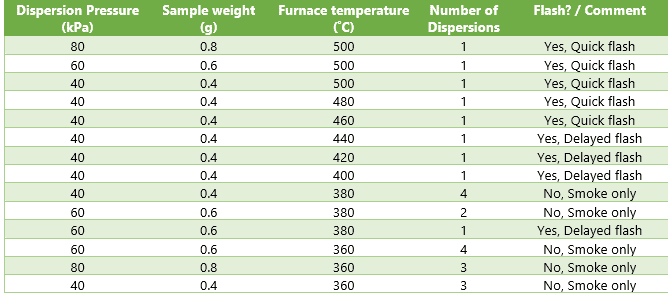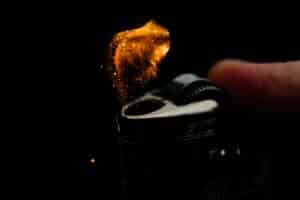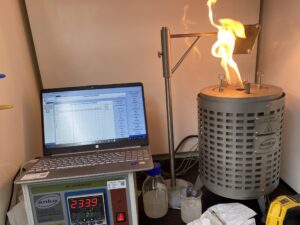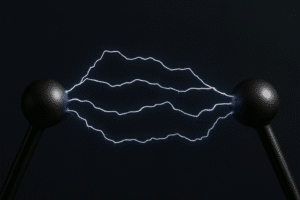We also offer
What Is A Minimum Autoignition Temperature (MAIT) Test?
The Minimum Autoignition Temperature (MAIT) of a dust cloud is a key parameter used to assess the risk of spontaneous ignition in environments with airborne combustible dust. It represents the lowest temperature at which a dust-air mixture ignites spontaneously without an external ignition source.
This test helps determine the maximum safe operating temperature for both electrical and non-electrical equipment in areas where the dust is present.
Testing Principle and Methodology
A small quantity of material is dispersed into a Godbert-Greenwald Furnace preheated to a specific temperature. If ignition occurs, the furnace temperature is gradually reduced in 20°C steps until ignition no longer happens.
Once ignition is no longer observed, the material concentration and dispersion air pressure are varied. Testing continues until non-ignition occurs regardless of these variables—at which point the MAIT is established.
-
The test typically begins at 500°C.
-
About 50–100 grams of material is required.
-
ASTM recommends a particle size of at least 95% below 75 microns and less than 5% moisture.
In some unique cases where the material doesn’t segregate during normal operation, it may be tested as received. If you’re unsure how your sample should be prepared, contact Prime Process Safety Center for guidance.

Typical Minimum Autoignition Temperature (MAIT) Data
Applicable Standard
The MAIT test follows ASTM E1491, Standard Test Method for Minimum Autoignition Temperature of Dust Clouds.
Data Interpretation
Understanding a dust’s MAIT is essential for identifying ignition hazards and selecting safe operating temperatures. Industries use MAIT data to:
-
Design controls to prevent spontaneous ignition.
-
Select suitable equipment for hot environments.
-
Set safe temperature limits during powder processing.
When Do You Perform a Minimum Autoignition Temperature Test?
MAIT testing is performed when evaluating the risk of ignition during powder handling—especially in environments with hot surfaces, grinding sparks, or heated equipment.
It’s also important for selecting electrical components in Class II hazardous locations.
Why Choose Prime Process Safety Center
Prime Process Safety Center is a trusted name in process safety testing, with a team of highly experienced laboratory professionals. Our mission is to deliver accurate, reliable, and defensible data that meets both industry and regulatory standards.
Why companies choose us:
-
We are knowledgeable and experienced in conducting MAIT testing for combustible dusts.
-
Our lab uses state-of-the-art explosibility testing equipment to deliver precise and sensitive results.
-
We follow strict testing protocols and quality control measures to ensure data consistency.
-
Our team offers expert interpretation of results and provides insights tailored to your specific application or research needs.
- As an ISO/IEC 17025:2017 accredited laboratory, we follow rigorous quality and competency requirements for every test we perform.
FAQ
What is Minimum Autoignition Temperature (MAIT) of Dust Clouds?
Answer: MAIT refers to the lowest temperature at which a dust cloud can ignite spontaneously in the air without an external ignition source, leading to combustion.
How is MAIT Determined for Dust Clouds?
Answer: MAIT is determined experimentally by subjecting a dust cloud to various temperatures in a controlled environment and identifying the lowest temperature at which self-ignition occurs.
Why is MAIT Important in Industrial Settings?
Answer: Understanding MAIT is crucial for assessing the fire and explosion risks associated with handling combustible dusts. It helps in implementing preventive measures and safety protocols to avoid dust cloud ignition.
What Factors Influence the MAIT of Dust Clouds?
Answer: Several factors affect MAIT, including the particle size distribution, dust concentration in the air, moisture content, chemical composition, and the specific conditions under which the dust is dispersed.
How is MAIT Used in Industrial Safety Practices?
Answer: MAIT data is used in hazard assessments, process design, and safety measures within industries handling combustible dusts. It assists in establishing safe operating conditions, ventilation systems, and explosion prevention strategies.
















